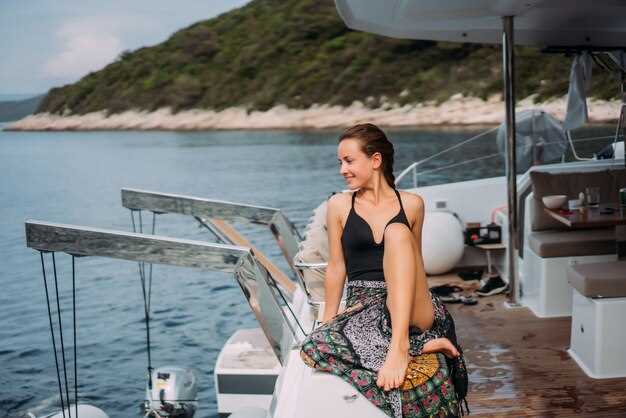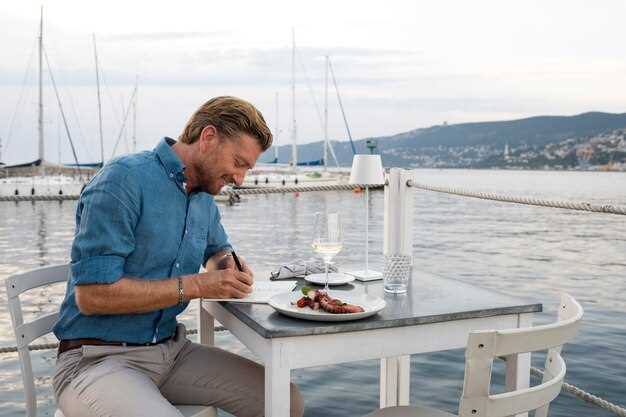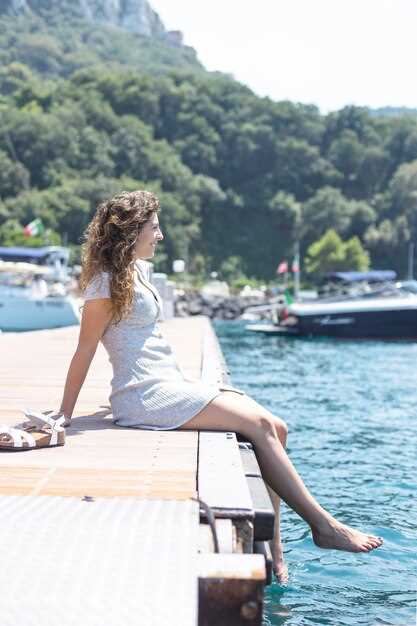Begin with a discreet captain-led charter to lock in a flexible schedule and smooth handling from day one. The best way to explore the coastline is to pair a skilled skipper with a well-planned route that avoids exposed anchorages in unsettled weather.
Begin in a major northern port and plan a clockwise loop to cover calanques, granite headlands, and crystal lagoons. Allocate time for marine sanctuaries where you can swim and snorkel away from crowds.
Along the route, you will meet shore crew and captains who share stories from the island’s heritage and offer fresh produce and shellfish at small ports. Expect bakeries, charcuterie, and sustainable fish markets where you can stock up for a day at sea.
Mornings bring steady sea breezes, afternoons ease as the sun moves toward the western horizon, letting you plan anchorages with calm water. Check weather updates and be ready to adjust your course by a few degrees to maintain comfortable sailing days.
Choose anchorages with clear protected bays, shallow reefs, and clear water. In busy seasons, drop anchor close to villages for shore visits, but stay away from crowded quays at peak times.
Bring a robust safety kit, a reliable VHF radio, navigation app, paper charts, sunscreen, and a spare anchor. A windsproof jacket helps in gusty mornings on the Corsican coast.
Costs vary with season and vessel size. For a mid-size yacht, expect a daily rate plus crew and provisioning costs; fuel and port dues add to the total. Look for transparent pricing, and ask about skipper meals and marina fees in advance.
Before you set sail, confirm the vessel’s maintenance, watch system, and galley equipment. Ask for a briefing on local rules, tide windows, and a flexible plan that can adapt to sea state and wind shifts. Such checks ensure the trip stays smooth and enjoyable from the start.
Corsica yacht charter: Ajaccio coast practical planning guide
Plan a Corsica charter along the Ajaccio coast in August to enjoy quiet anchorages, fresh breezes, and unique hotspots along crescent shores.
Create a 4–5 day loop starting from Ajaccio, with stops at Porticcio for provisioning, then sheltered anchorage near Capo di Feno, a sunset drift to Iles Sanguinaires, and a final night back in the marina; you’ll find many small coves perfect for an afternoon pause.
On land, the mountains rise behind the coast, offering dramatic views while you skim blue water past white cliffs; inshore you’ll find chestnut groves inland, and grand nature scenery around the gorges and sea caves along the shore.
Anchoring tips: choose protected coves with gentle depths, drop an anchor in 5 to 15 m of water, and secure a stern line when visibility is limited; sail together with your crew to keep positions clear and avoid crowding the best spots near Capo di Feno and Porticcio.
Logistics: stock fresh Corsican produce in Ajaccio, plan fuel and water refills, and use the harbor for a quick mooring at the Port d’Ajaccio; in small markets you can grab chestnut honey, local cheeses, and citrus for the galley, while the Fesch museum in town offers a quiet cultural option between sails.
If your plan grows, sail north to Saint-Florent for a different vibe with Cap Corse sights, then return to Ajaccio to complete the circuit and savor the mix of nature with culture along Corsica’s coast.
Best time to charter and sea conditions around Corsica
Choose May or september for your charter to balance wind, water conditions, and crowd levels. In september, seas stay warm and breezes are steady, making long hops along the coast comfortable and productive for photography.
Sea conditions vary by area. The north coast around Cap Corse and sartène can bring short, sporty breaks when a Mistral strengthens, while the southern vecchio coast tends to stay smoother and easier for beginners.
Hotspots along Corsica’s coast invite exploration by season. Choose anchorages near vecchio and sartène’s coastal approaches, or drop into Calvi, Ajaccio, and Bonifacio for culture-rich evenings. The atmosphere shifts with light, offering fantastic chances for photographers, and wildlife sometimes glides near the bow. Name a few vantage points to capture the stunning coastline.
To optimize your trip, align your calendar with forecasts 5-7 days out and adjust your route according to wind and swell. If youre sailing with a group, anchor in sheltered bays to protect against gusts; september’s visibility makes snorkeling stops appealing, and the sea stays calm enough for easy transitions between bays.
In practice, choosing windows in May–June or september–October gives you comfortable temperatures and favorable winds, letting you enjoy untamed coastlines, wildlife, and culture without long days at sea.
Choosing a charter type for Corsica: bareboat, crewed, or flotilla
Choose a crewed charter for Corsica if you want ease and local expertise to visit the shores and villages without worrying about logistics. A captain and host handle routing, provisioning, and docking, letting you focus on scenery and flavors. If youre unsure, I recommend a crewed charter for lighter logistics. in june and throughout the summer, you’ll enjoy pleasant sailing days, fresh fish, and plenty of time to explore historical ports, sleeping aboard very comfortable boats with regional touches like hazelnut pastries.
Bareboat suits sailors with proven skills who want independence and a flexible timetable. Youre responsible for navigation, provisioning, and safety, so you must have skills and a solid plan. Expect limestone cliffs and dramatic coastlines as you chart every day, and know you can anchor at port towns or remote bays. If you value comfort, just stick to a well-chosen route and check weather windows in june.
Flotilla offers the best of both worlds: independence with the safety of a joined group. You sail with a lead boat, staying on a clear schedule, and enjoy plenty anchorages along the coastline’s dramatic and spectacular scenery. It’s ideal for regional beauty lovers who want to visit pointe areas and stroll villages while sharing cooking and stories. You can sail without motor noise at times to feel the fresh sea and paradise vibes, yet still return to a marina each night. If you’re exploring another option, flotilla remains a flexible choice for groups that crave companionship plus freedom.
Popular Corsican coast itineraries starting from Ajaccio
Begin with a three-day western Corsican coast loop: Ajaccio → Cargèse → Piana → Scandola Reserve → Porto. This coastal arc offers a draw to water lovers, with dramatic limestone cliffs, untamed coves, and a coastline that keeps you moving along. If youre traveling with family, choose protected anchorages near small villages, enjoy seafood lunches by the quay, and keep the pace relaxed. Depending on wind, you can shorten legs to stay near sheltered bays or extend to Porto for a sunset show over the water.
Itinerary A – classic Western Arc: Ajaccio to Cargèse (roughly 20–25 nm, about 4–5 hours at a steady 5–6 knots). In Cargèse you can stroll the harbor, sample seafood, and admire the Greek-influenced architecture. Then head to Piana (about 15–20 nm, 3–4 hours) to anchor among the limestone cliffs of the Calanches; explore on foot or by tender, and enjoy a dramatic coastline view that attracts visitors and, in season, superyachts. The next leg to the Scandola–Porto zone (roughly 20–25 nm, 4–5 hours) brings you into an UNESCO-protected set of coves and coves, where access is regulated; plan a late afternoon stop near Porto for a wine and anchorage by the coast near the village.
Itinerary B – Girolata detour: Ajaccio to Capo di Feno, then to Girolata (a tiny village tucked into a sea inlet). The approach reveals untamed shorelines and is best done with a shallow draft. Moor near the bay and take a tender to explore the Genoese watchtower and the tiny beach; this stop is ideal for families and nature lovers who want quiet coastal scenery with direct access to hiking trails and limestone cliffs. If weather allows, continue to Porto for dinner and a short tour along the coastline, and return to Ajaccio the next day; youre able to cover a lot of the western coast in a single long weekend.
Itinerary C – Valinco Gulf extended route: Ajaccio → Propriano (25–30 nm, 5–6 hours) with a stop at the village of Sartène or a calm cove near Campomoro. Propriano offers fresh seafood and a protected marina, then continue along the coast to Tizzano or Capo di Feno for snorkeling and an easy land excursion, before looping back to Ajaccio. This loop showcases amazing coastal landscapes, quiet coves, and small villages along the western coastline that make the area popular with families and sailors alike. If you’re aboard a superyacht, Porto’s access options and a nearby mooring allow you to stay longer and enjoy the nearby coves together with your guests.
Mooring and marina access: Ajaccio and nearby harbours

Reserve a transient slip at Port d’Ajaccio’s marina well in advance, especially in peak season; the accessible facilities accommodate a wide range of yachts and the quay extends along the city waterfront, giving easy access to fuel, water, electricity, and showers. Then stroll to the église and the lively promenade to observe authentic Corsican people life and markets.
Nearby harbours extend your options: Porticcio across the bay offers sheltered mooring within easy reach of beaches and cafés; Sagone provides a compact option in a protective cove; Cargèse keeps a small marina with straightforward access to calm bays. Historic invasions along the coast left protective seawalls that still help shelter boats in changing winds. For longer itineraries, Propriano and Calvi open up additional locations for visiting landscapes and coastlines.
Craft itineraries that blend sheltered moorings with open-water hops to bays and reserves; a shorter loop may include Ajaccio, then a sail to Porticcio and the Sanguinaire bays, returning before dusk; a longer option extends to Propriano or even Bonifacio to see remarkable landscapes. When visiting, hire a tender to explore caves and silent coves, then anchor in protected coves for swimming. The coast offers a variety of locations beyond one harbor, giving you longer days and more exploration.
For culture, visiting Ajaccio blends museums with religious heritage: the musée Fesch houses a notable collection, and a stroll to a local église adds historical depth. The authentic atmosphere carries through to the nightlife along the waterfront, where cafés and musician venues light up the evenings. This unique mix invites people to come with clients for an engaging experience that feels truly Corsican, and some visitors even compare the musée to a tiny louvre in scale.
Plan mooring days with clear check-in routines at the marina office, keep to the buoyed channels, and respect local rules in anchorages. With careful planning, your Corsican sailing itinerary becomes a smooth loop that showcases Ajaccio’s bays, nearby harbours, and the coast’s natural reserves while staying accessible to every level of yachts and crew, then delivering an exciting, authentic charter experience that extends beyond a single harbor.
Charter checklist: documents, insurance, and safety gear

Print originals and carry digital copies of all documents; store them in a waterproof pouch on the boat and keep a scanned backup on your phone.
When you plan a Corsica charter, prepare for visits to historic sites and coastal cote, while enjoying naturelle scenery and relaxing stops. Use this right-sized checklist to balance exploration with safety across diverse terrains and ports, from wide bays to small harbours.
Documents to have on board
- Passports or national IDs for all aboard; ensure validity for at least six months after the charter end date and keep color photocopies stored separately from originals.
- Skipper’s license or certificate of competency; if you rent from a licensed operator, confirm which licenses are accepted for Corsica sailing.
- Charter agreement, vessel registration numbers, and a current crew list with emergency contacts; bring printed copies and have a digital version.
- Proof of vessel insurance (hull and liability) including policy numbers and insurer contact; also carry travel medical coverage details.
- Insurance card or certificate for medical needs; note any pre-existing conditions and keep medications list handy.
- Permits for protected sites or special bays if required; carry printed copies if visiting areas with restrictions.
- Emergency information sheet with port agent contacts, local authorities, and your boat’s MMSI/VHF call sign.
- Copies stored online or emailed to a trusted contact; ensure someone ashore can access them if needed.
- Any additional documents for family members (consents for minors, if applicable).
Insurance coverage to confirm
- Hull and machinery coverage with stated limits and deductibles; verify inclusions for salvage and environmental risks along Corsican coasts.
- Liability coverage for passengers and third parties; confirm it covers coastal waters, anchorages, and tender operations.
- Personal accident and medical coverage for all on board; include evacuation or repatriation if necessary.
- Cancellation or interruption protection; check claim requirements and time windows for refunds.
- Proof of insurance on board: policy numbers, 24/7 support line, and emergency numbers; keep printed card and digital copy.
Safety gear to verify and stock
- Personal flotation devices for everyone; one per person plus two spares, sized for adults and kids; store them in easy reach on deck.
- Throwable device (life buoy or horseshoe) with retrieval line; ensure it is quickly accessible.
- Fire extinguishers appropriate for your boat size (typically two or more); check pressure gauge and expiry dates.
- First aid kit updated with bandages, antiseptic, analgesics, gloves, and medicines for allergies; add any personal medical supplies for passengers.
- Signaling gear: parachute flares, smoke signals, horn or whistle; keep expiry dates in sight and replace as needed; consider an EPIRB or PLB if venturing far offshore.
- VHF radio with spare batteries or handheld unit; include nautical charts and a compass; consider a satellite messenger for remote zones.
- Bilge pump (manual) and bucket; stay prepared with spare parts for simple repairs (fuse, bulbs, clamps).
- Safety lines and deck harnesses for rough weather; use releasable tethers for crew on deck in active passages.
- Lighting and weather gear for night passages and early mornings; headlamps, waterproof clothing, and spare batteries.
- Tools and spare parts kit: basic toolkit, spare impeller, fuses, hose clamps, duct tape; include essentials for quick fixes.
Tips for enjoying Corsica’s coast while staying prepared
Before departure, map a half-day loop that touches small villages, historic sites, and a couple of plages to keep a steady rhythm between exploration and downtime. Corsica offers a wide, diverse coastline with islands and sites to visit, and Napoléon-era forts and baroque churches along the cote add cultural depth. Some ports offer concerts and local markets run by Fesch fans and other cultures, giving you a chance to sample local cuisine from the menu and mingle with residents. If you celebrate, bring a santa hat for festive evenings at the marina. By keeping documents current, securing solid insurance, and stocking reliable safety gear, you’ll have the right setup to enjoy outdoor adventures, visiting naturelle landscapes, and relaxing stays along this coast.

 Corsica yacht charter – Ultimate Guide to Sailing the Corsican Coast">
Corsica yacht charter – Ultimate Guide to Sailing the Corsican Coast">